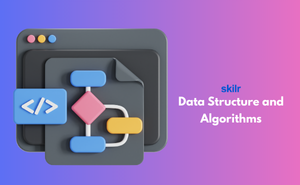👇 CELEBRATE CLOUD SECURITY DAY 👇
00
HOURS
00
MINUTES
00
SECONDS

The Data Structures and Algorithms exam assesses candidates' proficiency in designing, implementing, and analyzing efficient data structures and algorithms for solving computational problems. Data structures and algorithms are fundamental concepts in computer science, enabling efficient data organization, manipulation, and retrieval. This exam covers essential principles, techniques, and best practices related to data structures and algorithms, including array, linked list, stack, queue, tree, graph, sorting, searching, and algorithm analysis.
The Data Structure and Algorithms exam covers the following topics :-
Industry-endorsed certificates to strengthen your career profile.
Start learning immediately with digital materials, no delays.
Practice until you’re fully confident, at no additional charge.
Study anytime, anywhere, on laptop, tablet, or smartphone.
Courses and practice exams developed by qualified professionals.
Support available round the clock whenever you need help.
Easy-to-follow content with practice exams and assessments.
Join a global community of professionals advancing their skills.
Successful candidates are awarded a professional certification that attests to their mastery of data structures and algorithms, which can be showcased on resumes and professional profiles for career advancement.
Policies vary by provider, but some exams implement negative marking for multiple-choice sections to discourage random guessing.
Key topics include arrays, linked lists, stacks, queues, trees, graphs, sorting algorithms, recursion, dynamic programming, greedy algorithms, and complexity analysis.
Exams usually range from 90 minutes to 3 hours depending on the structure, complexity, and the administering organization.
Preparation should involve coding practice on online platforms, studying from textbooks or video courses, reviewing algorithm complexity, and attempting timed mock exams to build speed and accuracy.
Yes, most certification exams require candidates to write functional code to solve algorithmic problems within an online coding environment or integrated development interface.
The exam is more appropriate for individuals with foundational programming knowledge; beginners are advised to first build proficiency in at least one programming language and basic algorithmic concepts.
Most exams support widely-used languages such as Python, Java, C++, and JavaScript, with no strict preference, although C++ and Java are often preferred for performance-intensive problems.
The exam typically includes a mix of multiple-choice questions, coding challenges, algorithm design problems, and complexity analysis questions, either in-person or online under proctored conditions.
The exam is designed to evaluate a candidate's ability to implement, analyze, and optimize various data structures and algorithms to solve computational problems efficiently.